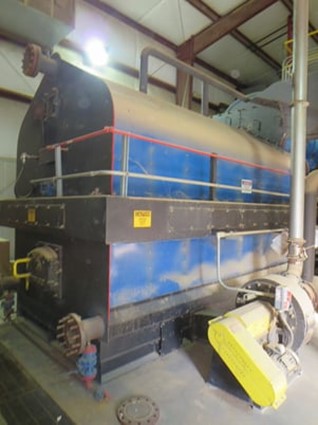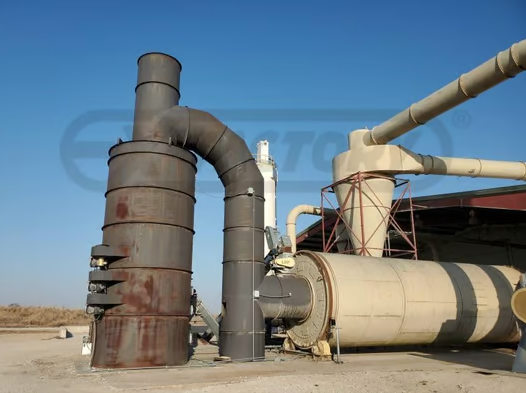Biomass boilers and burners represent a pivotal advancement in green energy solutions, offering a sustainable and efficient way to generate heat and power for a wide range of industrial, commercial, and residential applications. With technology continually evolving, understanding the various types, efficiencies, and applications of biomass boilers and burners is essential for anyone looking to invest in an eco-friendly and economical heating solution.


Popular Types of Biomass Boilers and Burners
Biomass boilers and burners come in various designs, each suited to different needs and preferences, ranging from fully automated systems to more traditional, manual options. Harnessing the power of organic materials, such as wood pellets, agricultural waste, and other renewable biological resources, these systems not only provide a cost-effective alternative to traditional fossil fuels but also contribute significantly to reducing carbon footprints. These technologies not only offer an environmentally friendly way to produce heat but also provide flexibility in how they operate, the type of fuel they use, and the efficiency they achieve. Here’s a closer look at some of the popular types:
- Fully Automated Biomass Boilers and Burners: These state-of-the-art systems are designed for maximum convenience and efficiency. Equipped with advanced technology, fully automated boilers can regulate their operation autonomously, adjusting fuel feed rates, air flow, and combustion conditions to optimize performance. They typically use pellets as fuel and are known for their high efficiency and low maintenance needs, making them an ideal choice for users seeking hassle-free operation.
- Semi-automated Biomass Boilers and Burners: Offering a balance between automation and cost, semi-automated systems require more input from the user compared to their fully automated counterparts. These systems might automatically feed fuel from a storage bin to the combustion chamber but might require manual ignition or cleaning. They provide a practical solution for those looking to benefit from biomass energy with a lower initial investment.
- Pellet-fired Biomass Boilers and Burners: Specializing in the use of pellets made from compressed wood or biomass, these burners are celebrated for their efficiency and ease of use. Pellets are a high-density, low-moisture form of biomass that provides consistent combustion and heat output. Pellet-fired systems can be either fully or semi-automated and are particularly popular in residential settings due to their compact size and low emission profiles.
- Combined Heat and Power (CHP) Biomass Systems (Log-fed and Wood Stoves): These innovative systems go a step further by not only providing heat for space heating and hot water but also generating electricity. CHP systems can be fueled by logs or wood chips and are an excellent option for larger buildings or complexes where both heat and power are in constant demand. While log-fed systems require manual feeding of fuel, the benefit of generating electricity can significantly offset energy costs and reduce reliance on the grid.
Low Temp How Water vs High Temp Hot Water Systems
Choosing between Low Temp Hot Water (LTHW) and High Temp Hot Water (HTHW) systems is pivotal for optimizing biomass boiler efficiency and suitability. LTHW systems operate below 120°C and are ideal for residential and light commercial settings. They excel with underfloor heating and modern radiators, needing lower temperatures for effective heat distribution. This efficiency not only saves on costs but also extends the system’s lifespan by mitigating risks of scaling and corrosion.
On the flip side, HTHW systems work above 120°C, reaching up to 180°C, catering to industrial or extensive commercial demands. Their high-temperature output is essential for processes requiring significant heat or in district heating systems, ensuring minimal heat loss over long distances. Although more capable of rapid and voluminous heating, these systems necessitate sturdier, thermally resistant components, impacting initial and maintenance costs.
The choice between LTHW and HTHW hinges on application scale, heating requirements, and financial considerations. While LTHW systems offer sustainability and cost-effectiveness for smaller scale applications, HTHW systems provide the necessary power for larger, more heat-intensive environments. Understanding these differences ensures the selection of a biomass boiler system that aligns with specific heating needs and operational goals, marrying efficiency with functionality.
What to Look for When Buying Biomass Boilers
When navigating the market for biomass boilers, several critical factors come into play to ensure you choose a system that meets your heating needs efficiently and sustainably. Here’s what to consider:
- Fuel Type: Biomass boilers can operate on a variety of organic materials, including wood chips, pellets, and agricultural waste. The choice of fuel impacts not only the boiler’s efficiency but also its operational costs and environmental footprint. Consider local availability and price of these fuels, as well as their energy content and moisture level, to ensure consistent and efficient operation.
- Heating Capacity and Output: Assess the heating demands of your property or facility to determine the required capacity of the biomass boiler. This involves considering the size of the area to be heated and the typical climate. A system that’s too small won’t adequately heat your space, while an oversized boiler can lead to inefficiency and increased costs.
- Combustion System: The technology behind the combustion system is crucial for the boiler’s performance. Modern systems offer advanced features like automatic ignition and feed systems, combustion control, and ash removal, which contribute to better efficiency, ease of use, and reduced emissions. Evaluate the combustion technology to ensure it meets your expectations for efficiency and automation.
- Emissions and Efficiency: Biomass boilers should comply with local emissions regulations and strive for high efficiency to reduce fuel consumption and operating costs. Look for systems with clean combustion technologies that minimize particulate matter and other pollutants. High-efficiency boilers convert more of the fuel’s energy into usable heat, meaning less waste and lower costs.
- Ease of Maintenance: Regular maintenance is vital for the longevity and efficiency of a biomass boiler. Consider the design and accessibility of the boiler’s components, as well as the frequency and cost of routine maintenance tasks. Some systems are designed with ease of maintenance in mind, featuring easily replaceable parts and automated cleaning systems.
- Compatibility with Your System: Ensure the biomass boiler is compatible with your existing heating system, including radiators, underfloor heating, and hot water systems. It should integrate seamlessly, allowing for efficient heat distribution without the need for extensive modifications. Compatibility extends to the available space for the boiler and any necessary fuel storage, as well as to the existing infrastructure for fuel delivery and ash disposal.
Applications for Biomass Burners
Biomass burners offer versatile applications across various sectors, leveraging renewable resources for energy while supporting sustainability goals. Here’s a look at some key areas where these systems are making an impact:
- Industrial and Commercial Heating: Biomass burners provide a cost-effective and eco-friendly heating solution for large buildings, warehouses, and commercial spaces. They can significantly reduce heating costs and carbon emissions, making them an attractive option for businesses aiming to enhance their green credentials.
- Agriculture: In the agricultural sector, biomass burners can be used for heating greenhouses, barns, and other facilities. They can utilize crop residues and animal waste, turning agricultural by-products into valuable energy sources, thus closing the loop on farm waste management.
- Power Generation: Biomass is increasingly used in power generation, either in dedicated biomass power plants or through co-firing in coal-fired power plants. This not only helps reduce reliance on fossil fuels but also provides a use for wood waste and other biomass by-products.
- Waste Management: Biomass burners can play a crucial role in waste management strategies by converting organic waste materials into energy. This reduces landfill use and the associated methane emissions, contributing to more sustainable waste handling.
- Food Processing: The food processing industry can benefit from biomass burners by using them for process heating and drying. Biomass energy can come from food waste, contributing to a more sustainable processing cycle.
- Wood Processing: Sawmills and other wood processing facilities generate significant amounts of wood waste. Biomass burners can transform this waste into heat or power, supporting the industry’s energy needs and reducing waste disposal costs.
- Paper Manufacturing: The paper manufacturing industry, which requires substantial energy for drying and other processes, can use biomass burners to lower energy costs and decrease carbon footprints. Biomass fuels can include residues from paper production, contributing to a circular economy approach.
Features and Accessories
Optimizing a biomass boiler system’s performance and efficiency hinges on integrating the right features and accessories, focusing on fuel management, heat transfer, and emissions control.
- Fuel Storage Solutions: Essential for operational efficiency, these include silos and bins designed to keep biomass dry and accessible. Automated feed systems can enhance convenience by delivering fuel to the boiler as needed, reducing manual labor and maintaining a consistent fuel supply.
- Heat Exchangers: Critical for efficient heat transfer from combustion to heating systems, these components must be optimized for the boiler’s fuel type and application, ensuring maximum heat output with minimal energy loss.
- Emission Monitoring Equipment: To adhere to environmental regulations and optimize combustion efficiency, modern biomass boilers may include devices to monitor exhaust gases for pollutants. This technology helps in maintaining regulatory compliance and fine-tuning the system for lower emissions and fuel consumption.
Tips & Tricks
You won’t have much difficulty finding a specific type of biomass boiler or burner on Surplus Record. At the top of all the pages on our website, you’ll find a search bar. Type the phrase “biomass boiler” into it, click on the category that drops down, and review the options we have available.
We also work with a variety of dealers who specialize in biomass boilers and burners. Additionally, you can find dealers in your area or by name who specialize in biomass boilers and burners.

